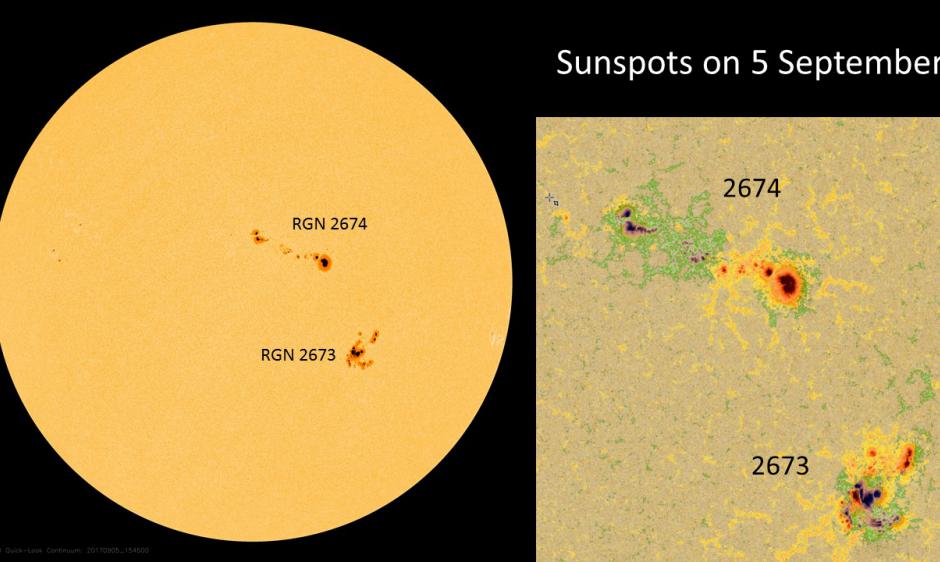
Two large sunspot groups remain on the visible disk on 5 September, 2017. The two regions (2673 and 2674) cover large amounts of the solar surface and with the proper and safe solar filters, are visible without a telescope. Remember, do not look at the Sun without a proper solar filter; if you still have your certified and undamaged eclipse glasses for example, you can use those to see these two sunspot groups for yourself! However, despite their large and impressive appearance, the two regions are distinctly different when it comes to their magnetic complexity. RGN 2674 has a fairly simple bipolar magnetic structure and is expected to remain inactive. However, there is good magnetic shear and mixed polarities present in within the more complex RGN 2673; therefore it is much more likely to produce solar flares and events - which has been the case, and R1-R2 (Minor-Moderate) radio blackouts are still expected. Keep checking our SWPC webpage for the latest forecasts and alerts.